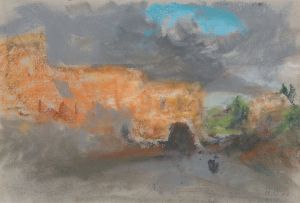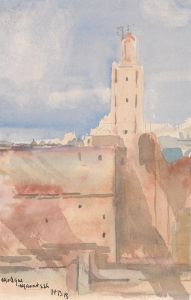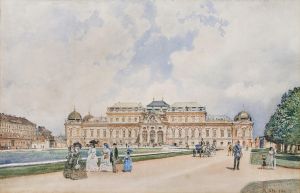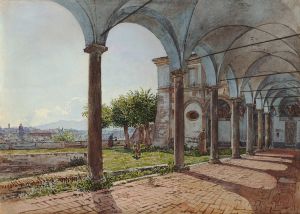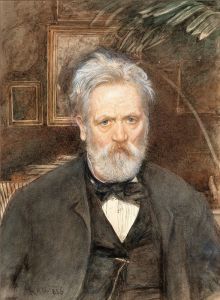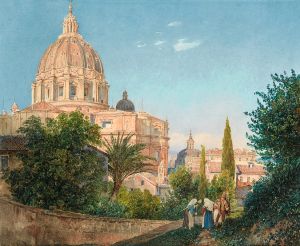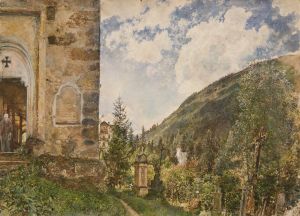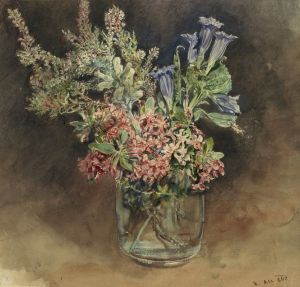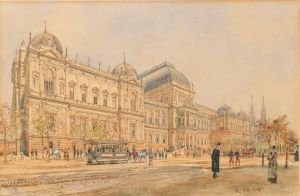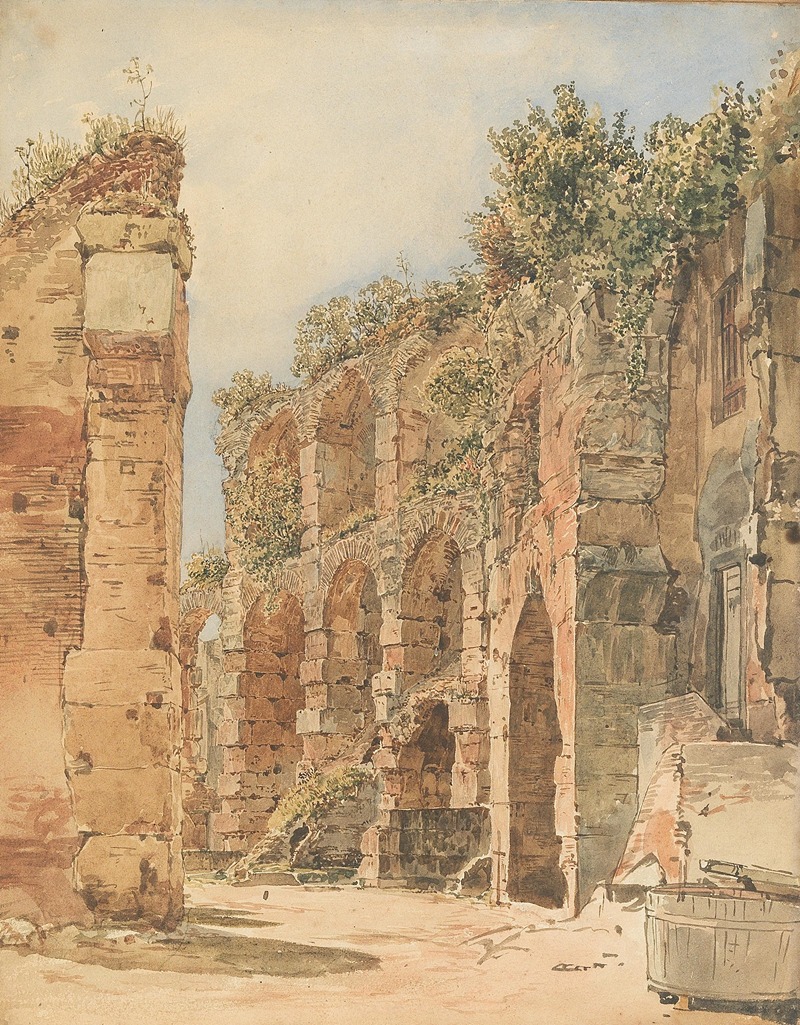
Die Burgruine Emmerberg in der neuen Welt bei Wiener Neustadt
A hand-painted replica of Rudolf von Alt’s masterpiece Die Burgruine Emmerberg in der neuen Welt bei Wiener Neustadt, meticulously crafted by professional artists to capture the true essence of the original. Each piece is created with museum-quality canvas and rare mineral pigments, carefully painted by experienced artists with delicate brushstrokes and rich, layered colors to perfectly recreate the texture of the original artwork. Unlike machine-printed reproductions, this hand-painted version brings the painting to life, infused with the artist’s emotions and skill in every stroke. Whether for personal collection or home decoration, it instantly elevates the artistic atmosphere of any space.
Rudolf von Alt was a renowned Austrian painter known for his detailed and realistic landscapes and architectural paintings. One of his notable works is "Die Burgruine Emmerberg in der neuen Welt bei Wiener Neustadt," which translates to "The Ruins of Emmerberg Castle in the New World near Wiener Neustadt." This painting exemplifies von Alt's skill in capturing the essence of historical architecture within a natural setting.
Rudolf von Alt was born on August 28, 1812, in Vienna, Austria. He was the son of Jakob Alt, a landscape and portrait painter, which influenced Rudolf's early interest in art. Rudolf von Alt studied at the Academy of Fine Arts in Vienna, where he honed his skills in watercolor, a medium he frequently used throughout his career. His works are celebrated for their meticulous attention to detail and the ability to convey the atmosphere of the locations he depicted.
"Die Burgruine Emmerberg in der neuen Welt bei Wiener Neustadt" is a watercolor painting that showcases the ruins of Emmerberg Castle. The castle itself is located near Wiener Neustadt, a town in Lower Austria. The painting captures the remnants of the medieval structure, set against a backdrop of the surrounding landscape. Von Alt's use of light and shadow, as well as his precise rendering of architectural details, brings the scene to life, offering viewers a glimpse into the past.
The ruins of Emmerberg Castle are historically significant, as they reflect the architectural style and fortification methods of the medieval period in Austria. While specific historical records about the castle's construction and use are limited, such ruins are often indicative of the region's feudal history and the strategic importance of such structures during their time of use. Castles like Emmerberg were typically built for defense and as residences for nobility, often situated in locations that provided strategic advantages, such as elevated positions or proximity to important trade routes.
Von Alt's painting not only serves as an artistic representation but also as a historical document, preserving the image of Emmerberg Castle as it stood in the 19th century. His work is part of a larger tradition of landscape and architectural painting that seeks to document and celebrate the cultural heritage of a region.
Rudolf von Alt's contributions to art extend beyond his individual works. He was a member of the Vienna Künstlerhaus and was recognized for his influence on the development of landscape painting in Austria. His works are held in high regard and are part of numerous public and private collections, including the Albertina in Vienna, which houses a significant collection of his watercolors and drawings.
In summary, "Die Burgruine Emmerberg in der neuen Welt bei Wiener Neustadt" by Rudolf von Alt is a testament to the artist's ability to capture the beauty and historical significance of architectural ruins. Through his detailed and atmospheric rendering, von Alt provides a window into the past, allowing contemporary audiences to appreciate the cultural and historical landscapes of 19th-century Austria.





![Karnac [Karnak]. Nov. 29th, 1838](/imgs/217503/s/david-roberts-karnac-karnak-nov-29th-1838-5a10b435.jpg)


